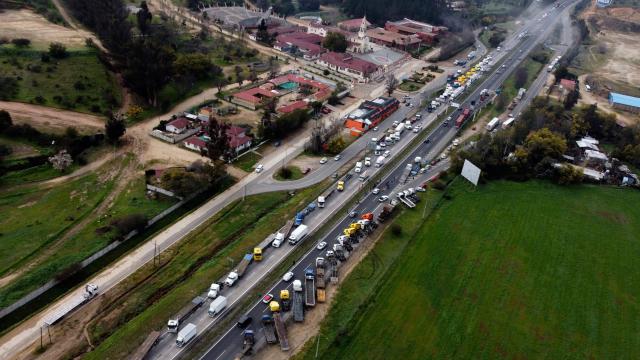There’s a lot of asphalt in the U.S. — approximately 16.2 billion tonnes, according to the U.S. National Asphalt Pavement Association. Unfortunately, it turns out all that asphalt is the source of harmful air pollution, especially in the Northern Hemisphere summer heat.
In a new study, published in Science Advances on Wednesday, researchers from Yale looked into asphalt as a source of secondary organic aerosols, which are a kind of particulate matter that have been linked to asthma and other insidious public health issues. The team found that under summertime conditions, asphalt may be a greater source of these polluting particles than gasoline and diesel from motor vehicles combined.
In cities, particulate matter pollution is a major source of public health concern particularly when it gets more severe in summertime. They’re also places covered in asphalt (about 45 per cent of urban surfaces are asphalt, to be exact). The team became curious about asphalt’s air quality impact when looking at previous research on air pollution in Los Angeles that couldn’t identify the source of certain types of air pollution called semi-volatile organic compounds. To determine whether or not pavement was the culprit exposed asphalt to a range of temperatures.
“We found that emissions from asphalt were strongly dependent on both temperature and solar exposure, so hotter, sunnier conditions will lead to more emissions,” Drew Gentner, an associate professor of chemical and environmental engineering at Yale University who led the study, said in an email.
In summertime, asphalt absorbs more heat than natural surfaces. The researchers heated asphalt in a lab to its average minimum summer temperature of 40 degrees Celsius, finding that it released semi-volatile organic compounds. But asphalt can get as hot as 60 degrees Celsius in the summer, and the findings show cranking up the heat to that level nearly doubled pollution. The researchers also exposed the material to different levels of solar radiation, finding that the asphalt produced 300 per cent more emissions when exposed to summertime-like sunny conditions.
Studies have found that residents of hot urban areas are exposed to higher levels of air pollution than their counterparts in cooler and more rural areas, due to proximity to vehicles and industry. The study suggests asphalt may be contributing as well. As the climate warms, pollution from asphalt could get even worse. The material’s temperatures continued to climb when it got even hotter than 60 degrees Celsius.
This all shows the need to focus not just on cleaning up emissions from cars and trucks, but also from roads themselves.
